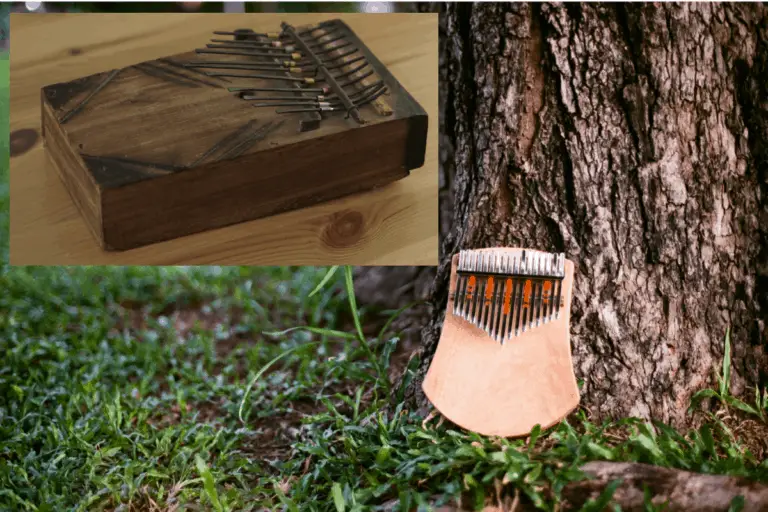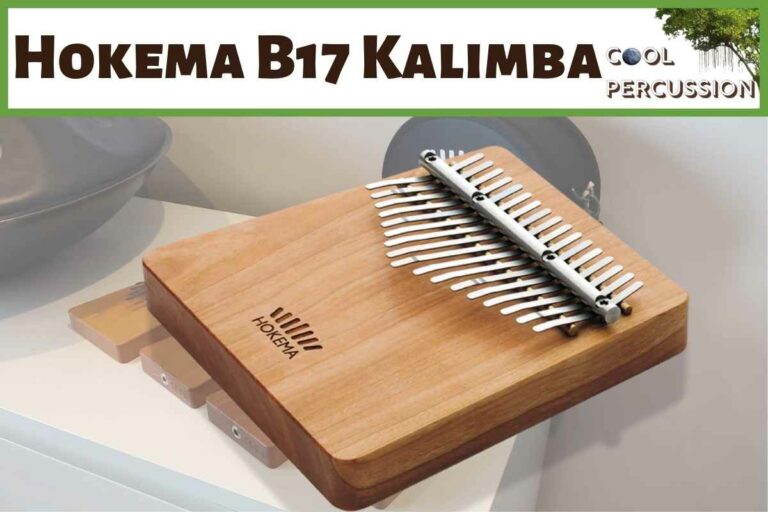How to Hold a Kalimba
The first thing you want to do when you recieve your first Kalimba is play it. Based on kalimba up to 17 keys, depending on the size of your instrument, coupled with the size of your hands and length of thumbs, it can feel a little awkward at first. So what is the right way to hold a kalimba?
A kalimba is held with both hands, in a cradle type position with three fingers on each hand cradling the instrument, the index fingers can support the sides of box kalimbas, most importantly the thumbs should be allowed freely to move across the keys on the front.
There are also Mbira instruments with even more tines that often utilize index finger playing too or mbiras with notes on the backside. Adjustments will be made for these, but for this article, I am concentrating, on the Box, Board, and Mini kalimbas as these are the most popular.
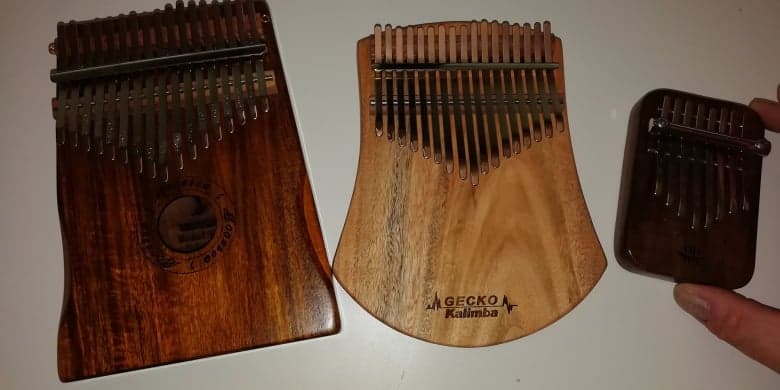
Let’s move on then and find out how holding each of these Kalimba models can be slightly different, and things to consider when sound holes are introduced on Box Kalimbas.
How to Hold A Kalimba Will Depend on Size
| Kalimba | W | H | D | Keys |
|---|---|---|---|---|
| Moozica | 130 | 185 | 35 | 17 |
| Gecko | 125 | 185 | 14-18 | 17 |
| Mini | 70 | 110 | 20 | 8 |
For this article, I am going to refer specifically, to the Gecko board Kalimba, a Moozica box kalimba and a mini 8 Tine Kalimba.
As you can see from the photo below, the 8 tine Kalimba is going to fit in just about anyones hands, It is quite small and just 70mm wide.
The Gecko, has the cutaway shape and whilst wider at the bottom than the Moozica model, at the optimim holding pointo halfway up and just below the bottom of the tines, they are almost the same width at 125-130mm
Reagrdless of each of these models, the same cradle style is going to be the most comfortable and correct way of holding a thumb piano when playing.
You need to build muscle memory and train your hands and thumbs to progress Kalimba technique.
This sounds like a crazy concept at first, but if you have ever tried to learn most any instrument, you will be aware how limited your technique may be at first and you wonder how the experts seem able to do things you can not.
When learning a handpan for instance, players need to move in a different way then they are used to, and thumb strikes can be painful after a while. The same can be sid for kalimba when after playing for some time consistently as a new player, you may have some fatigue in your knuckles.
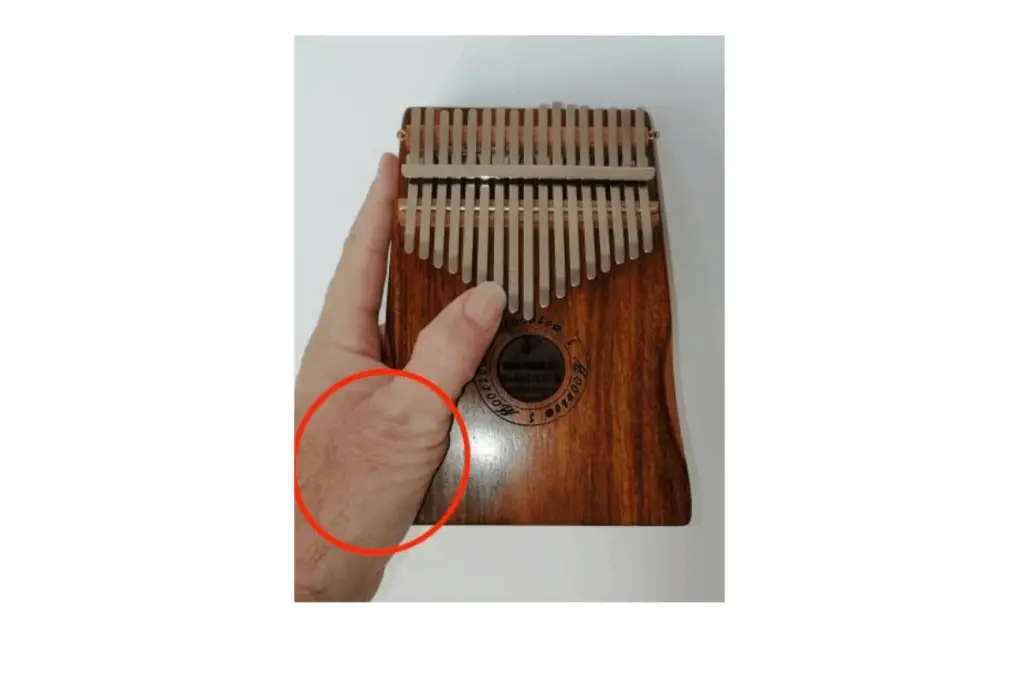
Continue practicing and this will pass as your hands become used to this new movement they are being asked to make. Especially the upper knuckle of your thumbs which will likely be affected the most.
My Favourite Kalimbas for Beginners
I own quite a few Kalimbas of differing sizes, keys, styles, and prices. I was somewhat addicted for a while! Anyway, having gone through quite a few when I first started getting interested, I have a couple of recommendations for you, if you are looking to buy your first, so you can try one out inexpensively and see if you want to take things further
Chances are, you’ll stick with one of these as you can learn and grow with them, which is why I’ve picked them out
Gecko Kalimba
This was the first-ever Kalimba I bought and it is the one I use the most today.
Because it is so gorgeous looking, I have mine on display in the office.
Hluru Board Kalimba
One thing that you might be slightly surprised about is that you can gain a richer sound from the board kalimba as opposed to the Box.
They are also a little easier to play if you do not have big hands because the depth is much shallower
Holding you Kalimba too Tightly May hurt Your Wrists
I would recommend not holding onto your thumb piano too tightly in this way, as several posters online have reported arm, elbow and wrist strain issues from holding their kalimbas too tightly or at weird angles.

It is also worth bearing in mind that kalimba is a strangely arranged instrument. It is not a hand position we are necessarily used to, we do not use it in day to day life, so when you begin playing it is not uncommon to have some issues.
These issues may range from light strain or irritation to genuine cramps. Normally these will subside as you get more used to the layout of the instrument, so do not be too concerned at first. however, if you are suffering from repeated painful strains, I would of course recommend seeing a doctor.
Some users report problems starting in your thumbs, and then building up from your thumbs throughout your wrist, onto your forearms and elbows. This I classic repetitive strain injury. As with any activity, you should ease into it and not overdo things.
If you started jogging for fun, you would start with short distances and increase over time. The same should be applied to playing your new kalimba.
Kalimba holding tricks.
There are several different techniques and hand configurations you can use to play the kalimba.
Traditionally, only two thumbs are used for this instrument. However, if you are skilled enough, you can use your right index fingernail as a way to increase your points of musical articulation. This allows for a further level of harmonization on the kalimba, which is already really easy to do with the kalimba’s diatonic note structure.
Being able to play more notes is obviously better for a more advanced position, but it is worth mentioning that the index finger stretching across the set of tines while the other support the kalimba below is a less natural hand position.
When you play like this, you sacrifice several elements of ergonomics in order to have more musical flexibility. Playing in this way is much more likely to give a kalimba player something like Repetitive Strain Injury or other cramps and strains.
Another thing you can capitalize upon with the kalimba’s layout and standard finger configuration is that it is an idiophonic instrument. No, that does not mean it is unintelligent.
Idiophonic instruments produce most of their sounds by vibrating their entire body, rather than using strings and keys. There are some idiophonic elements to the acoustic guitar slapping when any percussion on the guitar’s body causes resonance in the strings.
The kalimba is entirely idiophonic, so what you can do with the rest of your fingers while your thumbs are busy plucking away is get rhythmic.
A kalimba is a hollow instrument with a specifically chosen tone wood. This tone wood determines what kind of sound you get. Because of the entirely idiophonic nature of thumb pianos like the kalimba, when you tap the back of them with your fingers, the vibrations ring throughout the tone wood and through the tines.
This makes playing rhythm and melody so much more impressive sounding on the humble kalimba, as you can get a unique harmonic percussion that nothing else really has.
Do You need Long Thumbs to Play Kalimba?
Not at all, my thumbs come in at a mere 76mm including a significant nail, so that;s not long, but you can see from the photos below, It will reach way past the centre key on the instrument providing me theoption of playing a few tines on the opposite side if required.
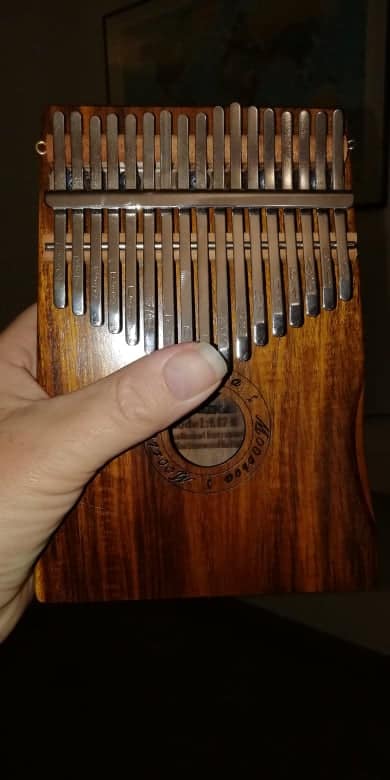

It is worth making sure that your fingers do not entirely cover the back of your kalimba. Most kalimbas inspired by the Hugh Tracey kalimba have two small sound holes at the bottom of the instrument. These hols can be used to create vibrato effects but lifting and dropping your fingers over them. Much the same way a guitar player would ‘wobble’ a string.
Another method of holding the kalimba is geared towards avoiding this, and hold it a bit straighter. This method is harsher on your hands, as it is not held in your hands in the same way. The previous method above works great for smaller 8 tine kalimbas, but larger ones are slightly too chunky.
For larger kalimbas, it is recommended to hold the instrument flush to your palm and outstretched fingers, so that the tips of your fingers are pointing away from your body. This would place the direction of your fingers perpendicular to the main sound hole’s direction.
This finger position then has your thumbs curl around over top, to be able to strike the tines. On top of that, your pinky fingers are supposed to lightly curl around the bottom of your kalimba.
Kalimbas Used in this Article
I used three of my Kalimbas as examples in this article [Yes I am a Kalimba nut!] You can find these instruments on Amazon as per the links below

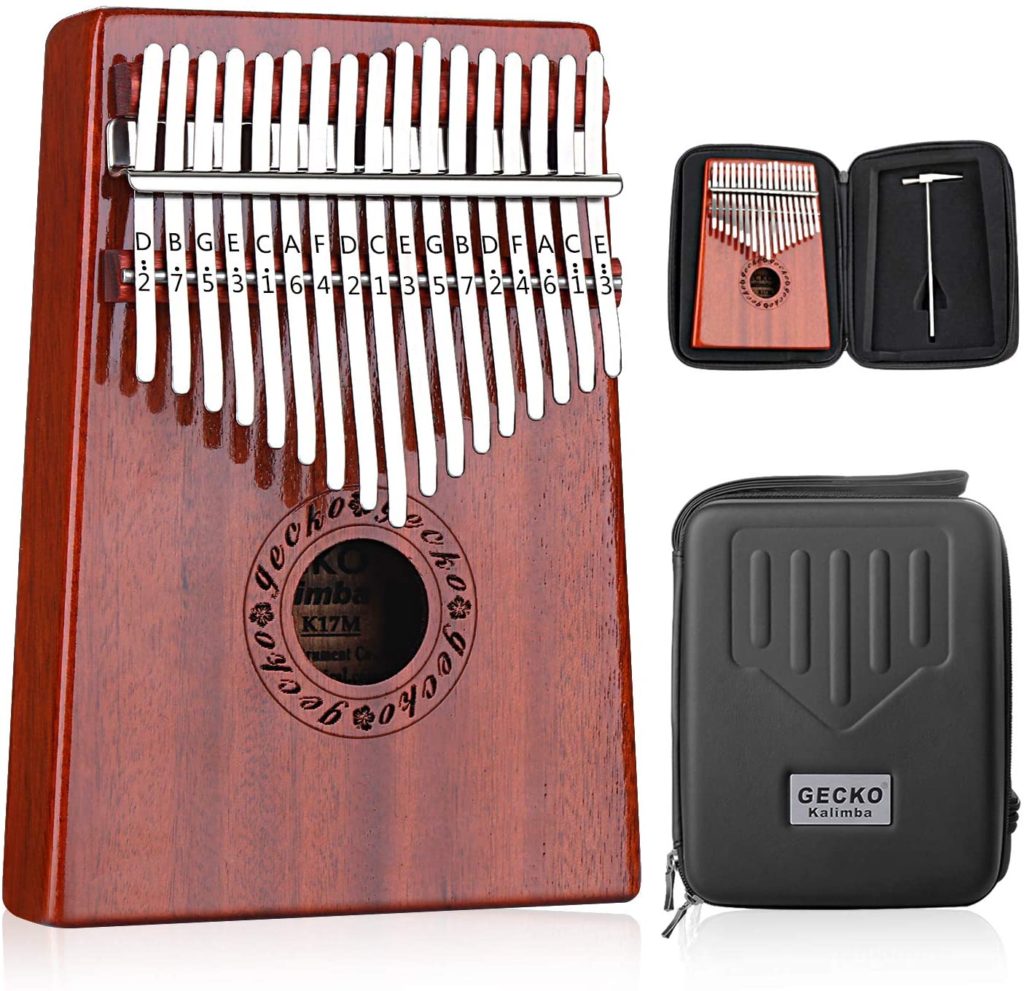


![[EASY] How to Tune a Kalimba Properly (Tools, Tips & Scales)](https://cdn-0.coolpercussion.com/wp-content/uploads/2020/10/61aJbYAhlzL._AC_SL1500_-768x655.jpg)

